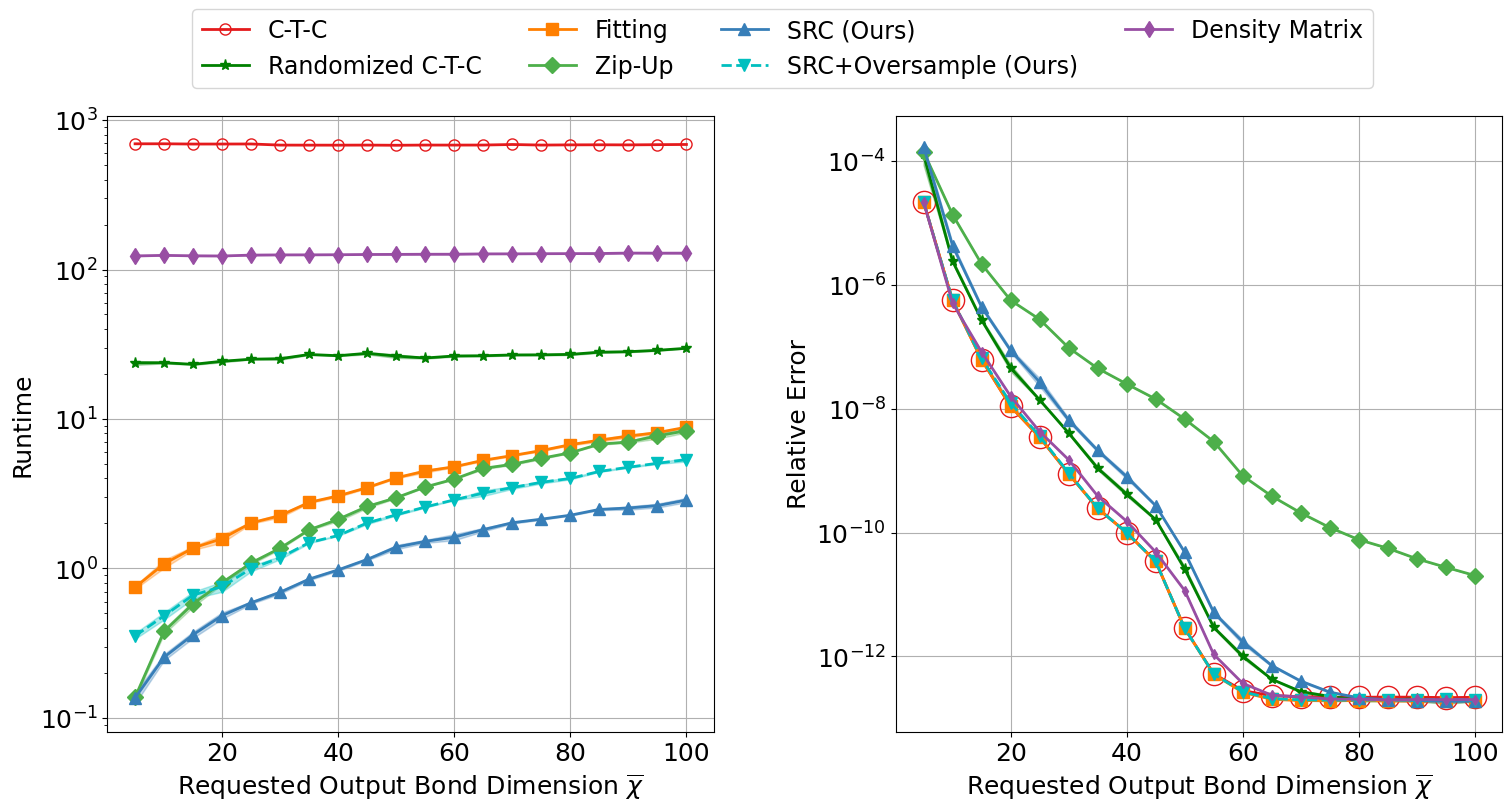Gallery
Welcome to the Research Gallery. Here I collect my favorite visualizations and results from my research projects, most of these examples come with reproducibe code if you want to try them out yourself.
Sucessive Randomized Compression (SRC)
In my paper Successive randomized compression we design a randomized algorithm for the compressed MPO-MPS product. Compared to alternatives, it is either faster (contract-then-compress, density matrix) or more accurate (zip-up, variational/fitting) than other leading methods for this problem.


To demonstrate the effectiveness of SRC, we simulate the unitary time evolution \[ |\boldsymbol{\psi}(t)\rangle = \mathrm{e}^{-i t \mathbf{H}}\,|\boldsymbol{\psi}(0)\rangle \] starting from a locally preturbed initial state vector of $n=101$ spins \[ |\boldsymbol{\psi}(0)\rangle = \mathrm{e}^{i(\pi/4)\,\mathbf{Y}_{\lceil n/2\rceil}}\,|\boldsymbol{\psi}_{\min}\rangle\in \mathbb{C}^{2^{101}}, \] under the long‐range interacting XY Hamiltonian \[ \mathbf{H} = \frac{1}{2}\sum_{1 \le i < j \le n} \frac{J}{|i - j|^{1.5}}\bigl(\mathbf{X}_i\mathbf{X}_j + \mathbf{Y}_i\mathbf{Y}_j\bigr)\in \mathbb{C}^{2^{101}\times 2^{101}}. \] Here, \(|\boldsymbol{\psi}_{\min}\rangle\) is the ground state of \(\mathbf{H}\) obtained via DMRG-2. We then examine the magnetization dynamics of this defected system using the Time-Dependent Variational Principle with Ancillary Krylov Subspace method (GSE-TDVP1). GSE-TDVP1 builds a Krylov space \(\mathcal{K}\) from compressed MPO–MPS products and uses it to enrich the MPS at each timestep—an extension of the original TDVP algorithm. Additional details for this experiment can be found in the full paper.
Full Python implementations are available here: